Analysing Torts, Negligence & Employment Law: A Restaurant Case Study
VerifiedAdded on 2023/04/25
|11
|2814
|377
Case Study
AI Summary
This case study analyzes a scenario where customers at Mama Mia restaurant experience harm due to a contaminated product. The analysis explores the legal implications under torts, negligence, employment law, and workplace health and safety regulations. It assesses the liability of the waiter, restaurant management, and the product manufacturer, Andrew, in relation to the harm suffered by the customers. The study examines the duty of care owed by each party, potential breaches of that duty, and the availability of legal remedies for the affected individuals. The Work Health and Safety Act 2011 and the Food Act 2008 are evaluated to determine if any breaches occurred and what penalties or remedies may be applicable. The document aims to provide a comprehensive legal analysis of the situation, determining the rights and responsibilities of all parties involved.
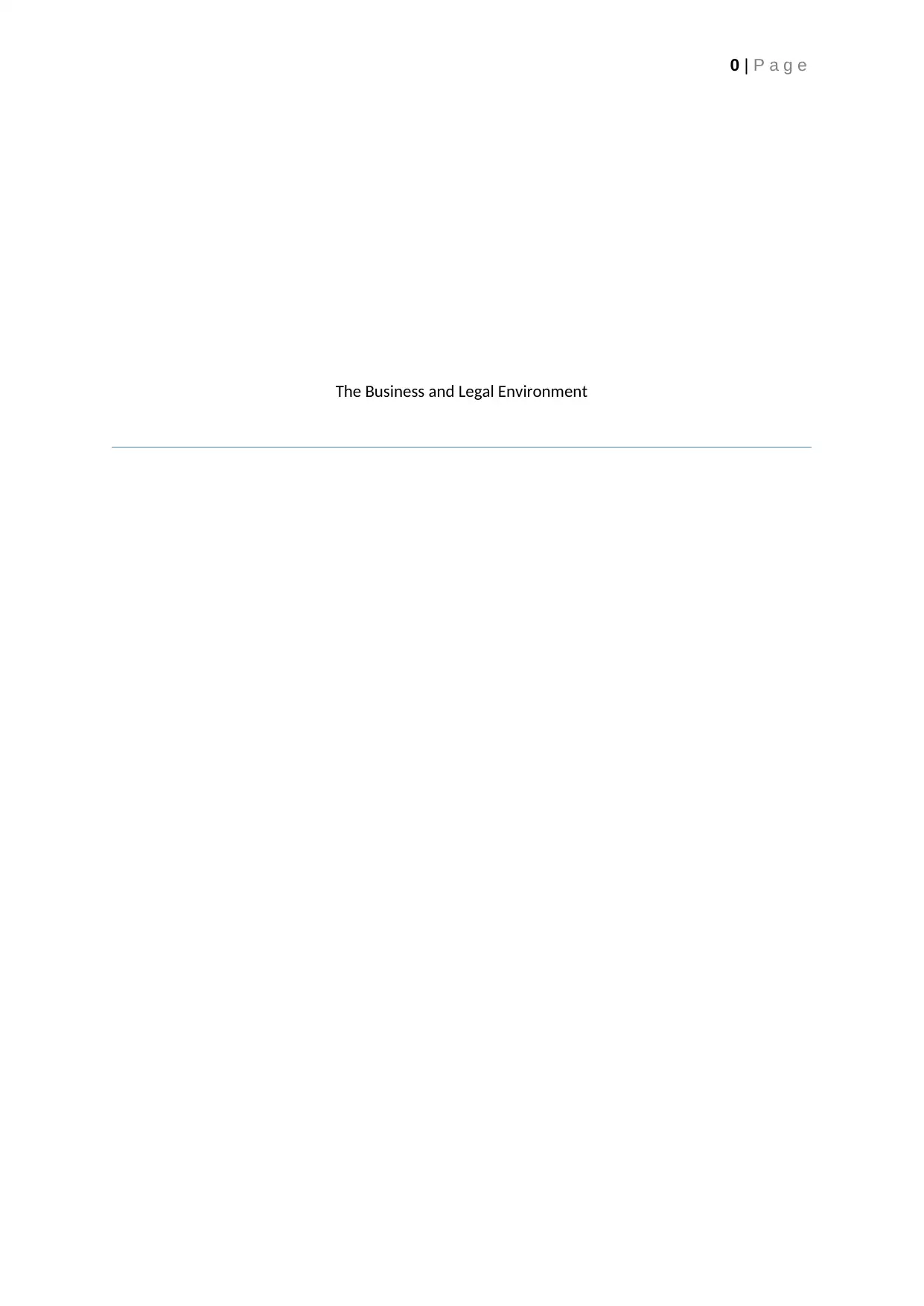
0 | P a g e
The Business and Legal Environment
The Business and Legal Environment
Paraphrase This Document
Need a fresh take? Get an instant paraphrase of this document with our AI Paraphraser
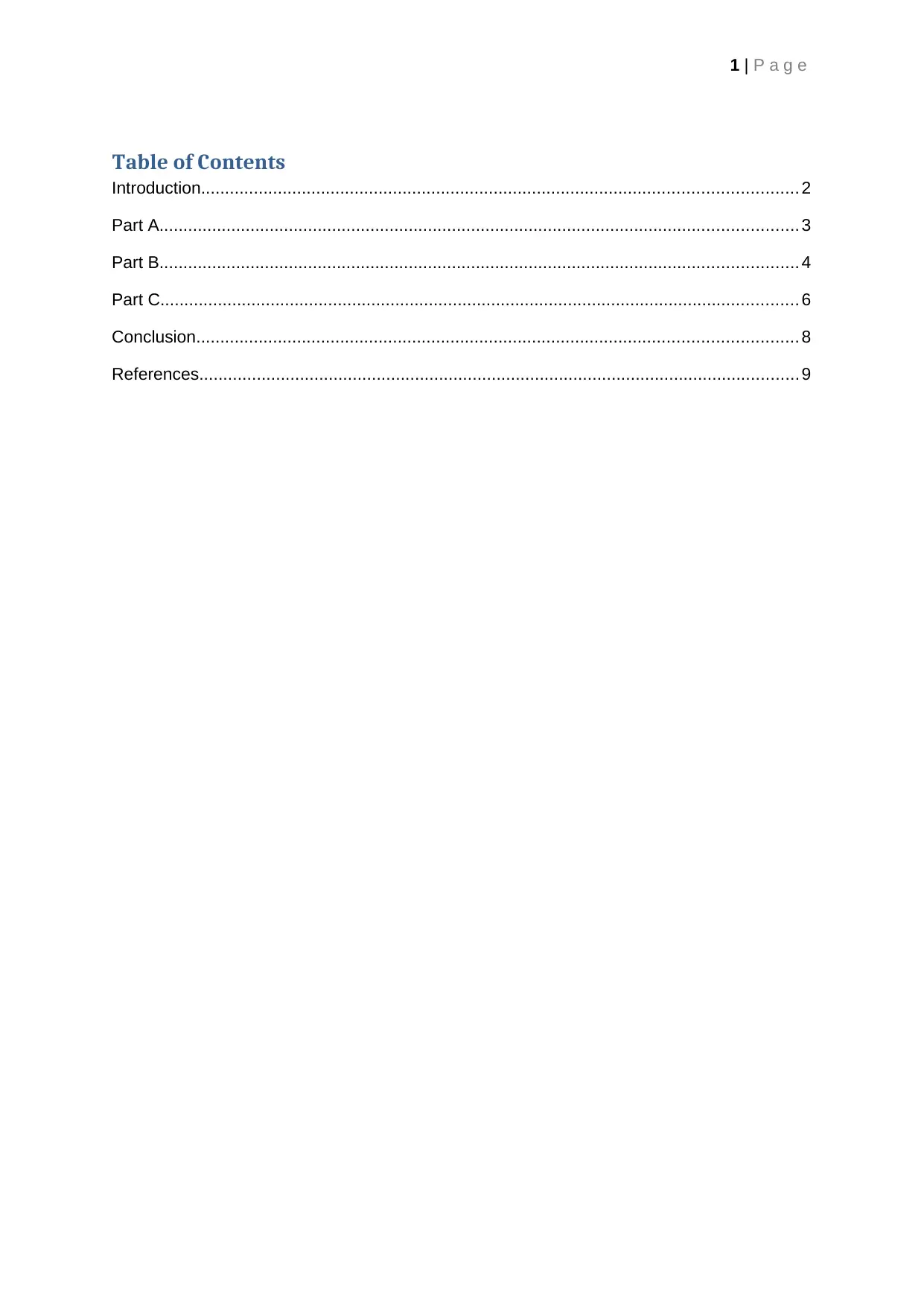
1 | P a g e
Table of Contents
Introduction............................................................................................................................ 2
Part A..................................................................................................................................... 3
Part B..................................................................................................................................... 4
Part C..................................................................................................................................... 6
Conclusion............................................................................................................................. 8
References............................................................................................................................. 9
Table of Contents
Introduction............................................................................................................................ 2
Part A..................................................................................................................................... 3
Part B..................................................................................................................................... 4
Part C..................................................................................................................................... 6
Conclusion............................................................................................................................. 8
References............................................................................................................................. 9
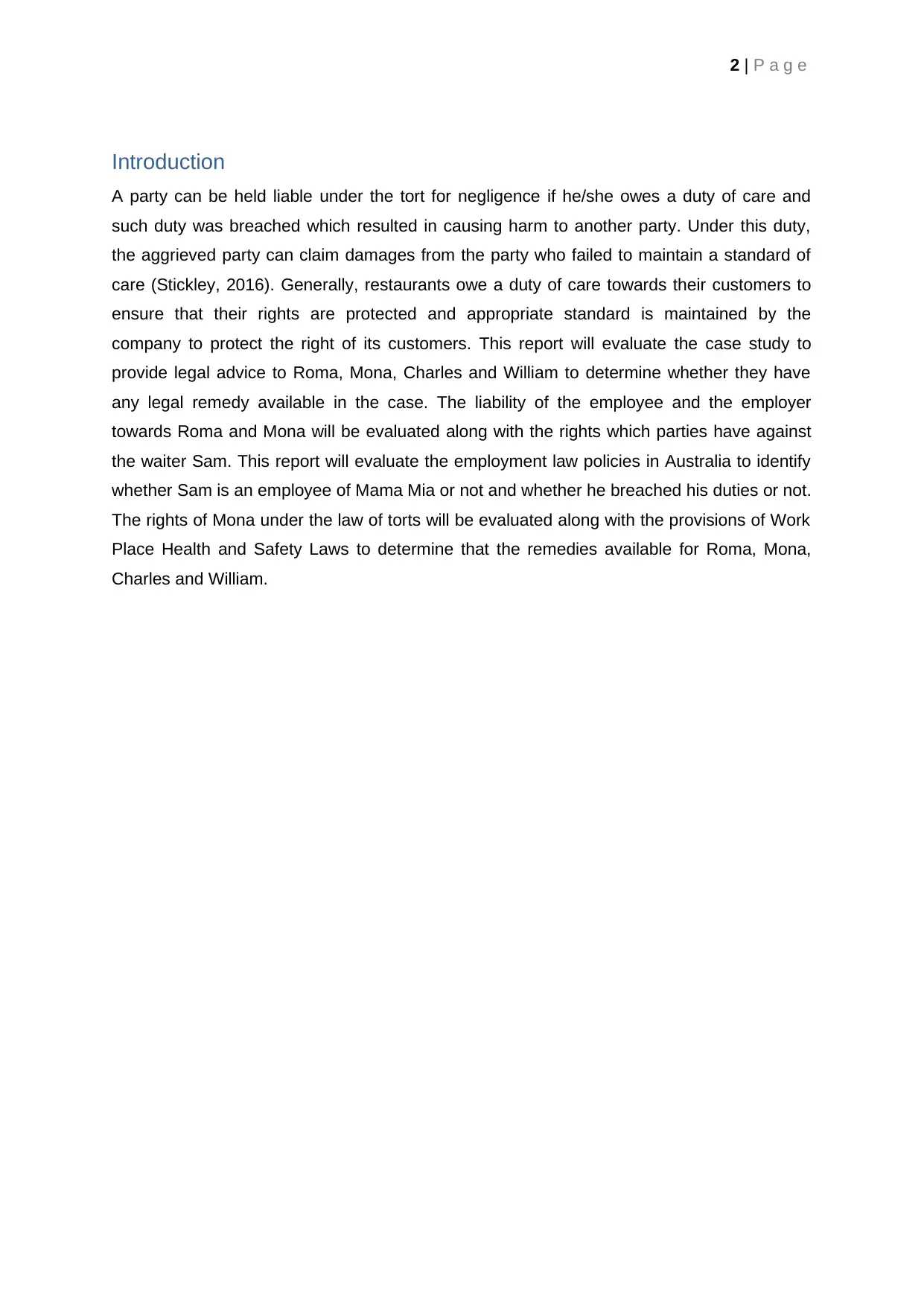
2 | P a g e
Introduction
A party can be held liable under the tort for negligence if he/she owes a duty of care and
such duty was breached which resulted in causing harm to another party. Under this duty,
the aggrieved party can claim damages from the party who failed to maintain a standard of
care (Stickley, 2016). Generally, restaurants owe a duty of care towards their customers to
ensure that their rights are protected and appropriate standard is maintained by the
company to protect the right of its customers. This report will evaluate the case study to
provide legal advice to Roma, Mona, Charles and William to determine whether they have
any legal remedy available in the case. The liability of the employee and the employer
towards Roma and Mona will be evaluated along with the rights which parties have against
the waiter Sam. This report will evaluate the employment law policies in Australia to identify
whether Sam is an employee of Mama Mia or not and whether he breached his duties or not.
The rights of Mona under the law of torts will be evaluated along with the provisions of Work
Place Health and Safety Laws to determine that the remedies available for Roma, Mona,
Charles and William.
Introduction
A party can be held liable under the tort for negligence if he/she owes a duty of care and
such duty was breached which resulted in causing harm to another party. Under this duty,
the aggrieved party can claim damages from the party who failed to maintain a standard of
care (Stickley, 2016). Generally, restaurants owe a duty of care towards their customers to
ensure that their rights are protected and appropriate standard is maintained by the
company to protect the right of its customers. This report will evaluate the case study to
provide legal advice to Roma, Mona, Charles and William to determine whether they have
any legal remedy available in the case. The liability of the employee and the employer
towards Roma and Mona will be evaluated along with the rights which parties have against
the waiter Sam. This report will evaluate the employment law policies in Australia to identify
whether Sam is an employee of Mama Mia or not and whether he breached his duties or not.
The rights of Mona under the law of torts will be evaluated along with the provisions of Work
Place Health and Safety Laws to determine that the remedies available for Roma, Mona,
Charles and William.
⊘ This is a preview!⊘
Do you want full access?
Subscribe today to unlock all pages.

Trusted by 1+ million students worldwide
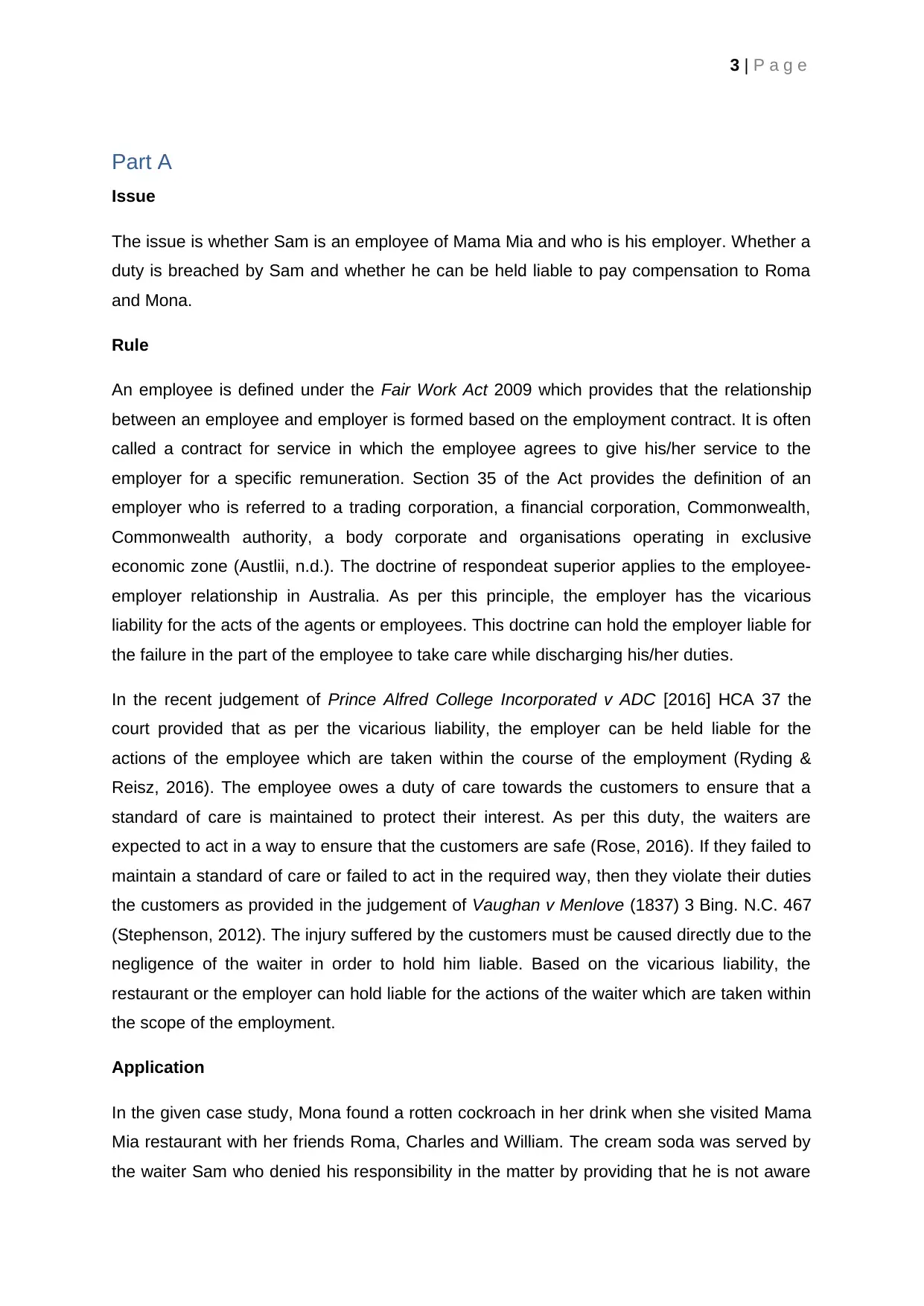
3 | P a g e
Part A
Issue
The issue is whether Sam is an employee of Mama Mia and who is his employer. Whether a
duty is breached by Sam and whether he can be held liable to pay compensation to Roma
and Mona.
Rule
An employee is defined under the Fair Work Act 2009 which provides that the relationship
between an employee and employer is formed based on the employment contract. It is often
called a contract for service in which the employee agrees to give his/her service to the
employer for a specific remuneration. Section 35 of the Act provides the definition of an
employer who is referred to a trading corporation, a financial corporation, Commonwealth,
Commonwealth authority, a body corporate and organisations operating in exclusive
economic zone (Austlii, n.d.). The doctrine of respondeat superior applies to the employee-
employer relationship in Australia. As per this principle, the employer has the vicarious
liability for the acts of the agents or employees. This doctrine can hold the employer liable for
the failure in the part of the employee to take care while discharging his/her duties.
In the recent judgement of Prince Alfred College Incorporated v ADC [2016] HCA 37 the
court provided that as per the vicarious liability, the employer can be held liable for the
actions of the employee which are taken within the course of the employment (Ryding &
Reisz, 2016). The employee owes a duty of care towards the customers to ensure that a
standard of care is maintained to protect their interest. As per this duty, the waiters are
expected to act in a way to ensure that the customers are safe (Rose, 2016). If they failed to
maintain a standard of care or failed to act in the required way, then they violate their duties
the customers as provided in the judgement of Vaughan v Menlove (1837) 3 Bing. N.C. 467
(Stephenson, 2012). The injury suffered by the customers must be caused directly due to the
negligence of the waiter in order to hold him liable. Based on the vicarious liability, the
restaurant or the employer can hold liable for the actions of the waiter which are taken within
the scope of the employment.
Application
In the given case study, Mona found a rotten cockroach in her drink when she visited Mama
Mia restaurant with her friends Roma, Charles and William. The cream soda was served by
the waiter Sam who denied his responsibility in the matter by providing that he is not aware
Part A
Issue
The issue is whether Sam is an employee of Mama Mia and who is his employer. Whether a
duty is breached by Sam and whether he can be held liable to pay compensation to Roma
and Mona.
Rule
An employee is defined under the Fair Work Act 2009 which provides that the relationship
between an employee and employer is formed based on the employment contract. It is often
called a contract for service in which the employee agrees to give his/her service to the
employer for a specific remuneration. Section 35 of the Act provides the definition of an
employer who is referred to a trading corporation, a financial corporation, Commonwealth,
Commonwealth authority, a body corporate and organisations operating in exclusive
economic zone (Austlii, n.d.). The doctrine of respondeat superior applies to the employee-
employer relationship in Australia. As per this principle, the employer has the vicarious
liability for the acts of the agents or employees. This doctrine can hold the employer liable for
the failure in the part of the employee to take care while discharging his/her duties.
In the recent judgement of Prince Alfred College Incorporated v ADC [2016] HCA 37 the
court provided that as per the vicarious liability, the employer can be held liable for the
actions of the employee which are taken within the course of the employment (Ryding &
Reisz, 2016). The employee owes a duty of care towards the customers to ensure that a
standard of care is maintained to protect their interest. As per this duty, the waiters are
expected to act in a way to ensure that the customers are safe (Rose, 2016). If they failed to
maintain a standard of care or failed to act in the required way, then they violate their duties
the customers as provided in the judgement of Vaughan v Menlove (1837) 3 Bing. N.C. 467
(Stephenson, 2012). The injury suffered by the customers must be caused directly due to the
negligence of the waiter in order to hold him liable. Based on the vicarious liability, the
restaurant or the employer can hold liable for the actions of the waiter which are taken within
the scope of the employment.
Application
In the given case study, Mona found a rotten cockroach in her drink when she visited Mama
Mia restaurant with her friends Roma, Charles and William. The cream soda was served by
the waiter Sam who denied his responsibility in the matter by providing that he is not aware
Paraphrase This Document
Need a fresh take? Get an instant paraphrase of this document with our AI Paraphraser
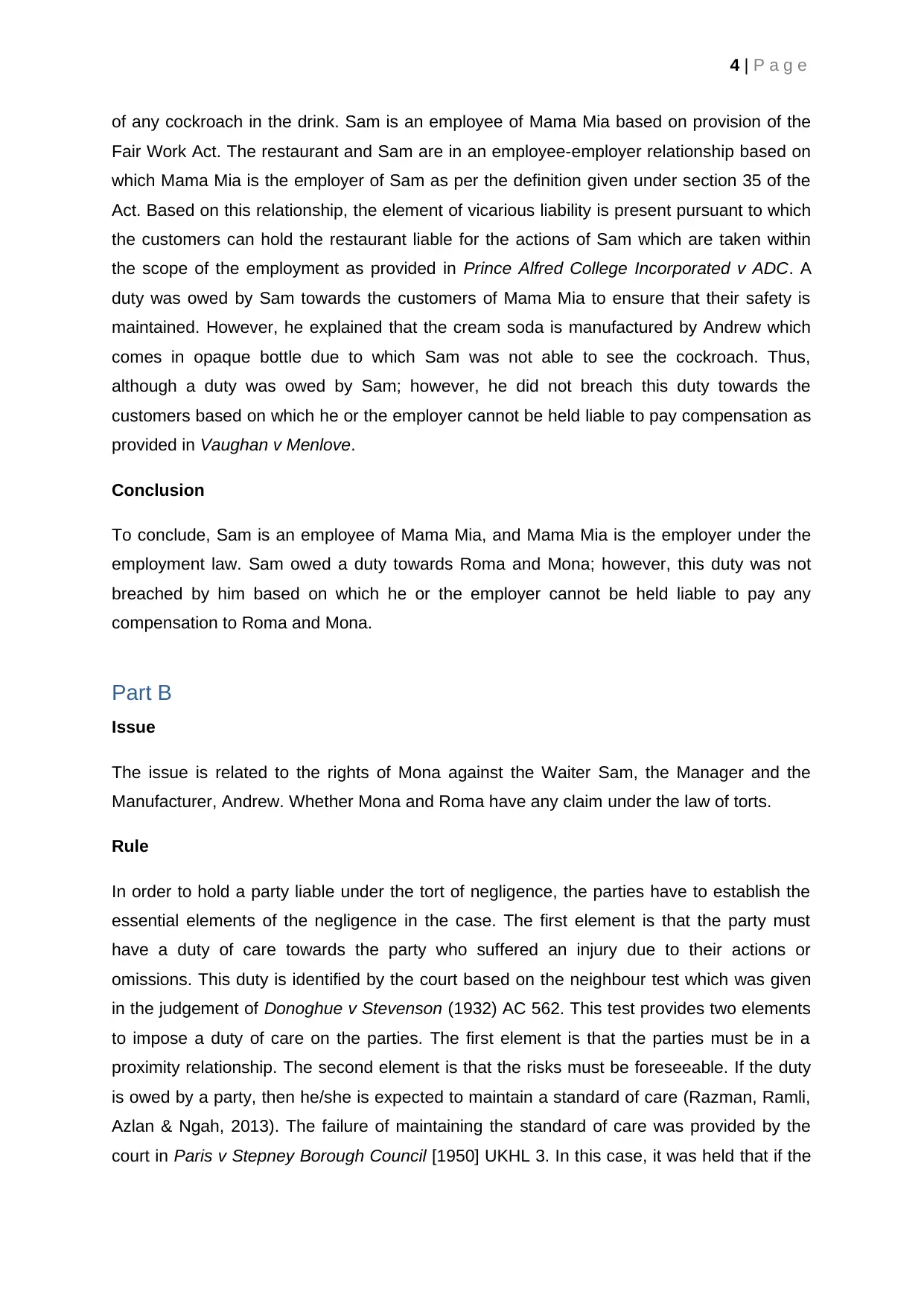
4 | P a g e
of any cockroach in the drink. Sam is an employee of Mama Mia based on provision of the
Fair Work Act. The restaurant and Sam are in an employee-employer relationship based on
which Mama Mia is the employer of Sam as per the definition given under section 35 of the
Act. Based on this relationship, the element of vicarious liability is present pursuant to which
the customers can hold the restaurant liable for the actions of Sam which are taken within
the scope of the employment as provided in Prince Alfred College Incorporated v ADC. A
duty was owed by Sam towards the customers of Mama Mia to ensure that their safety is
maintained. However, he explained that the cream soda is manufactured by Andrew which
comes in opaque bottle due to which Sam was not able to see the cockroach. Thus,
although a duty was owed by Sam; however, he did not breach this duty towards the
customers based on which he or the employer cannot be held liable to pay compensation as
provided in Vaughan v Menlove.
Conclusion
To conclude, Sam is an employee of Mama Mia, and Mama Mia is the employer under the
employment law. Sam owed a duty towards Roma and Mona; however, this duty was not
breached by him based on which he or the employer cannot be held liable to pay any
compensation to Roma and Mona.
Part B
Issue
The issue is related to the rights of Mona against the Waiter Sam, the Manager and the
Manufacturer, Andrew. Whether Mona and Roma have any claim under the law of torts.
Rule
In order to hold a party liable under the tort of negligence, the parties have to establish the
essential elements of the negligence in the case. The first element is that the party must
have a duty of care towards the party who suffered an injury due to their actions or
omissions. This duty is identified by the court based on the neighbour test which was given
in the judgement of Donoghue v Stevenson (1932) AC 562. This test provides two elements
to impose a duty of care on the parties. The first element is that the parties must be in a
proximity relationship. The second element is that the risks must be foreseeable. If the duty
is owed by a party, then he/she is expected to maintain a standard of care (Razman, Ramli,
Azlan & Ngah, 2013). The failure of maintaining the standard of care was provided by the
court in Paris v Stepney Borough Council [1950] UKHL 3. In this case, it was held that if the
of any cockroach in the drink. Sam is an employee of Mama Mia based on provision of the
Fair Work Act. The restaurant and Sam are in an employee-employer relationship based on
which Mama Mia is the employer of Sam as per the definition given under section 35 of the
Act. Based on this relationship, the element of vicarious liability is present pursuant to which
the customers can hold the restaurant liable for the actions of Sam which are taken within
the scope of the employment as provided in Prince Alfred College Incorporated v ADC. A
duty was owed by Sam towards the customers of Mama Mia to ensure that their safety is
maintained. However, he explained that the cream soda is manufactured by Andrew which
comes in opaque bottle due to which Sam was not able to see the cockroach. Thus,
although a duty was owed by Sam; however, he did not breach this duty towards the
customers based on which he or the employer cannot be held liable to pay compensation as
provided in Vaughan v Menlove.
Conclusion
To conclude, Sam is an employee of Mama Mia, and Mama Mia is the employer under the
employment law. Sam owed a duty towards Roma and Mona; however, this duty was not
breached by him based on which he or the employer cannot be held liable to pay any
compensation to Roma and Mona.
Part B
Issue
The issue is related to the rights of Mona against the Waiter Sam, the Manager and the
Manufacturer, Andrew. Whether Mona and Roma have any claim under the law of torts.
Rule
In order to hold a party liable under the tort of negligence, the parties have to establish the
essential elements of the negligence in the case. The first element is that the party must
have a duty of care towards the party who suffered an injury due to their actions or
omissions. This duty is identified by the court based on the neighbour test which was given
in the judgement of Donoghue v Stevenson (1932) AC 562. This test provides two elements
to impose a duty of care on the parties. The first element is that the parties must be in a
proximity relationship. The second element is that the risks must be foreseeable. If the duty
is owed by a party, then he/she is expected to maintain a standard of care (Razman, Ramli,
Azlan & Ngah, 2013). The failure of maintaining the standard of care was provided by the
court in Paris v Stepney Borough Council [1950] UKHL 3. In this case, it was held that if the
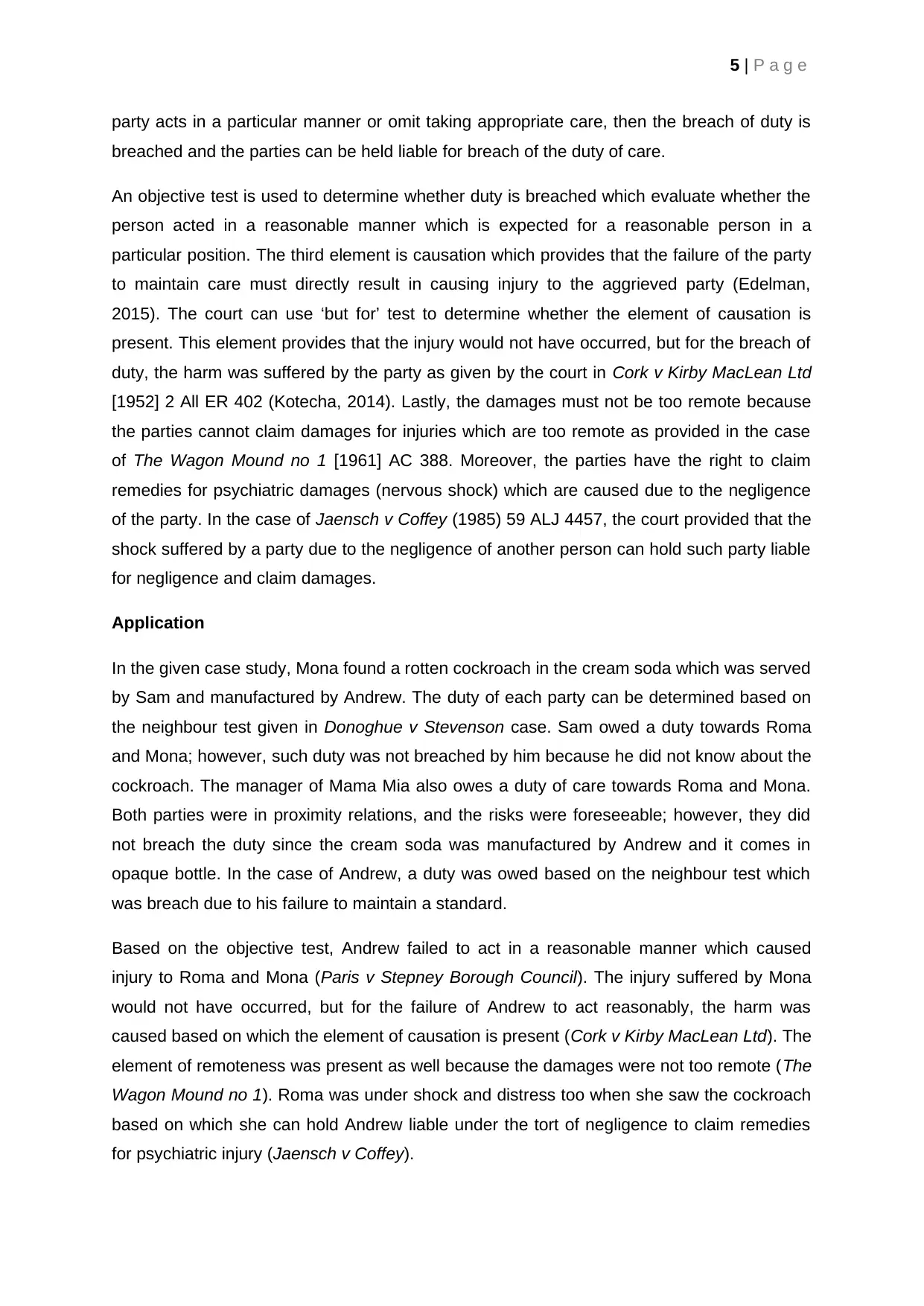
5 | P a g e
party acts in a particular manner or omit taking appropriate care, then the breach of duty is
breached and the parties can be held liable for breach of the duty of care.
An objective test is used to determine whether duty is breached which evaluate whether the
person acted in a reasonable manner which is expected for a reasonable person in a
particular position. The third element is causation which provides that the failure of the party
to maintain care must directly result in causing injury to the aggrieved party (Edelman,
2015). The court can use ‘but for’ test to determine whether the element of causation is
present. This element provides that the injury would not have occurred, but for the breach of
duty, the harm was suffered by the party as given by the court in Cork v Kirby MacLean Ltd
[1952] 2 All ER 402 (Kotecha, 2014). Lastly, the damages must not be too remote because
the parties cannot claim damages for injuries which are too remote as provided in the case
of The Wagon Mound no 1 [1961] AC 388. Moreover, the parties have the right to claim
remedies for psychiatric damages (nervous shock) which are caused due to the negligence
of the party. In the case of Jaensch v Coffey (1985) 59 ALJ 4457, the court provided that the
shock suffered by a party due to the negligence of another person can hold such party liable
for negligence and claim damages.
Application
In the given case study, Mona found a rotten cockroach in the cream soda which was served
by Sam and manufactured by Andrew. The duty of each party can be determined based on
the neighbour test given in Donoghue v Stevenson case. Sam owed a duty towards Roma
and Mona; however, such duty was not breached by him because he did not know about the
cockroach. The manager of Mama Mia also owes a duty of care towards Roma and Mona.
Both parties were in proximity relations, and the risks were foreseeable; however, they did
not breach the duty since the cream soda was manufactured by Andrew and it comes in
opaque bottle. In the case of Andrew, a duty was owed based on the neighbour test which
was breach due to his failure to maintain a standard.
Based on the objective test, Andrew failed to act in a reasonable manner which caused
injury to Roma and Mona (Paris v Stepney Borough Council). The injury suffered by Mona
would not have occurred, but for the failure of Andrew to act reasonably, the harm was
caused based on which the element of causation is present (Cork v Kirby MacLean Ltd). The
element of remoteness was present as well because the damages were not too remote (The
Wagon Mound no 1). Roma was under shock and distress too when she saw the cockroach
based on which she can hold Andrew liable under the tort of negligence to claim remedies
for psychiatric injury (Jaensch v Coffey).
party acts in a particular manner or omit taking appropriate care, then the breach of duty is
breached and the parties can be held liable for breach of the duty of care.
An objective test is used to determine whether duty is breached which evaluate whether the
person acted in a reasonable manner which is expected for a reasonable person in a
particular position. The third element is causation which provides that the failure of the party
to maintain care must directly result in causing injury to the aggrieved party (Edelman,
2015). The court can use ‘but for’ test to determine whether the element of causation is
present. This element provides that the injury would not have occurred, but for the breach of
duty, the harm was suffered by the party as given by the court in Cork v Kirby MacLean Ltd
[1952] 2 All ER 402 (Kotecha, 2014). Lastly, the damages must not be too remote because
the parties cannot claim damages for injuries which are too remote as provided in the case
of The Wagon Mound no 1 [1961] AC 388. Moreover, the parties have the right to claim
remedies for psychiatric damages (nervous shock) which are caused due to the negligence
of the party. In the case of Jaensch v Coffey (1985) 59 ALJ 4457, the court provided that the
shock suffered by a party due to the negligence of another person can hold such party liable
for negligence and claim damages.
Application
In the given case study, Mona found a rotten cockroach in the cream soda which was served
by Sam and manufactured by Andrew. The duty of each party can be determined based on
the neighbour test given in Donoghue v Stevenson case. Sam owed a duty towards Roma
and Mona; however, such duty was not breached by him because he did not know about the
cockroach. The manager of Mama Mia also owes a duty of care towards Roma and Mona.
Both parties were in proximity relations, and the risks were foreseeable; however, they did
not breach the duty since the cream soda was manufactured by Andrew and it comes in
opaque bottle. In the case of Andrew, a duty was owed based on the neighbour test which
was breach due to his failure to maintain a standard.
Based on the objective test, Andrew failed to act in a reasonable manner which caused
injury to Roma and Mona (Paris v Stepney Borough Council). The injury suffered by Mona
would not have occurred, but for the failure of Andrew to act reasonably, the harm was
caused based on which the element of causation is present (Cork v Kirby MacLean Ltd). The
element of remoteness was present as well because the damages were not too remote (The
Wagon Mound no 1). Roma was under shock and distress too when she saw the cockroach
based on which she can hold Andrew liable under the tort of negligence to claim remedies
for psychiatric injury (Jaensch v Coffey).
⊘ This is a preview!⊘
Do you want full access?
Subscribe today to unlock all pages.

Trusted by 1+ million students worldwide
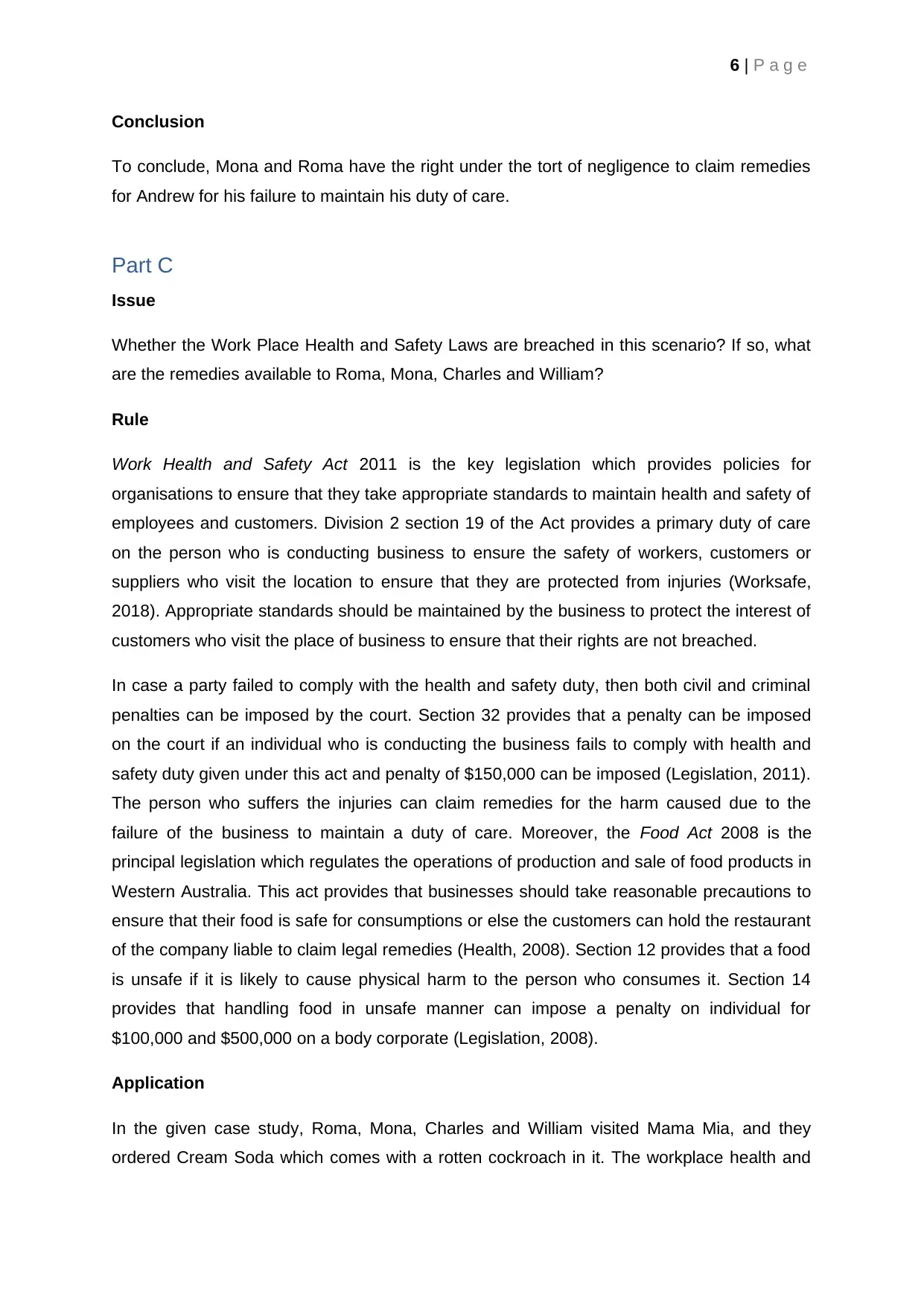
6 | P a g e
Conclusion
To conclude, Mona and Roma have the right under the tort of negligence to claim remedies
for Andrew for his failure to maintain his duty of care.
Part C
Issue
Whether the Work Place Health and Safety Laws are breached in this scenario? If so, what
are the remedies available to Roma, Mona, Charles and William?
Rule
Work Health and Safety Act 2011 is the key legislation which provides policies for
organisations to ensure that they take appropriate standards to maintain health and safety of
employees and customers. Division 2 section 19 of the Act provides a primary duty of care
on the person who is conducting business to ensure the safety of workers, customers or
suppliers who visit the location to ensure that they are protected from injuries (Worksafe,
2018). Appropriate standards should be maintained by the business to protect the interest of
customers who visit the place of business to ensure that their rights are not breached.
In case a party failed to comply with the health and safety duty, then both civil and criminal
penalties can be imposed by the court. Section 32 provides that a penalty can be imposed
on the court if an individual who is conducting the business fails to comply with health and
safety duty given under this act and penalty of $150,000 can be imposed (Legislation, 2011).
The person who suffers the injuries can claim remedies for the harm caused due to the
failure of the business to maintain a duty of care. Moreover, the Food Act 2008 is the
principal legislation which regulates the operations of production and sale of food products in
Western Australia. This act provides that businesses should take reasonable precautions to
ensure that their food is safe for consumptions or else the customers can hold the restaurant
of the company liable to claim legal remedies (Health, 2008). Section 12 provides that a food
is unsafe if it is likely to cause physical harm to the person who consumes it. Section 14
provides that handling food in unsafe manner can impose a penalty on individual for
$100,000 and $500,000 on a body corporate (Legislation, 2008).
Application
In the given case study, Roma, Mona, Charles and William visited Mama Mia, and they
ordered Cream Soda which comes with a rotten cockroach in it. The workplace health and
Conclusion
To conclude, Mona and Roma have the right under the tort of negligence to claim remedies
for Andrew for his failure to maintain his duty of care.
Part C
Issue
Whether the Work Place Health and Safety Laws are breached in this scenario? If so, what
are the remedies available to Roma, Mona, Charles and William?
Rule
Work Health and Safety Act 2011 is the key legislation which provides policies for
organisations to ensure that they take appropriate standards to maintain health and safety of
employees and customers. Division 2 section 19 of the Act provides a primary duty of care
on the person who is conducting business to ensure the safety of workers, customers or
suppliers who visit the location to ensure that they are protected from injuries (Worksafe,
2018). Appropriate standards should be maintained by the business to protect the interest of
customers who visit the place of business to ensure that their rights are not breached.
In case a party failed to comply with the health and safety duty, then both civil and criminal
penalties can be imposed by the court. Section 32 provides that a penalty can be imposed
on the court if an individual who is conducting the business fails to comply with health and
safety duty given under this act and penalty of $150,000 can be imposed (Legislation, 2011).
The person who suffers the injuries can claim remedies for the harm caused due to the
failure of the business to maintain a duty of care. Moreover, the Food Act 2008 is the
principal legislation which regulates the operations of production and sale of food products in
Western Australia. This act provides that businesses should take reasonable precautions to
ensure that their food is safe for consumptions or else the customers can hold the restaurant
of the company liable to claim legal remedies (Health, 2008). Section 12 provides that a food
is unsafe if it is likely to cause physical harm to the person who consumes it. Section 14
provides that handling food in unsafe manner can impose a penalty on individual for
$100,000 and $500,000 on a body corporate (Legislation, 2008).
Application
In the given case study, Roma, Mona, Charles and William visited Mama Mia, and they
ordered Cream Soda which comes with a rotten cockroach in it. The workplace health and
Paraphrase This Document
Need a fresh take? Get an instant paraphrase of this document with our AI Paraphraser
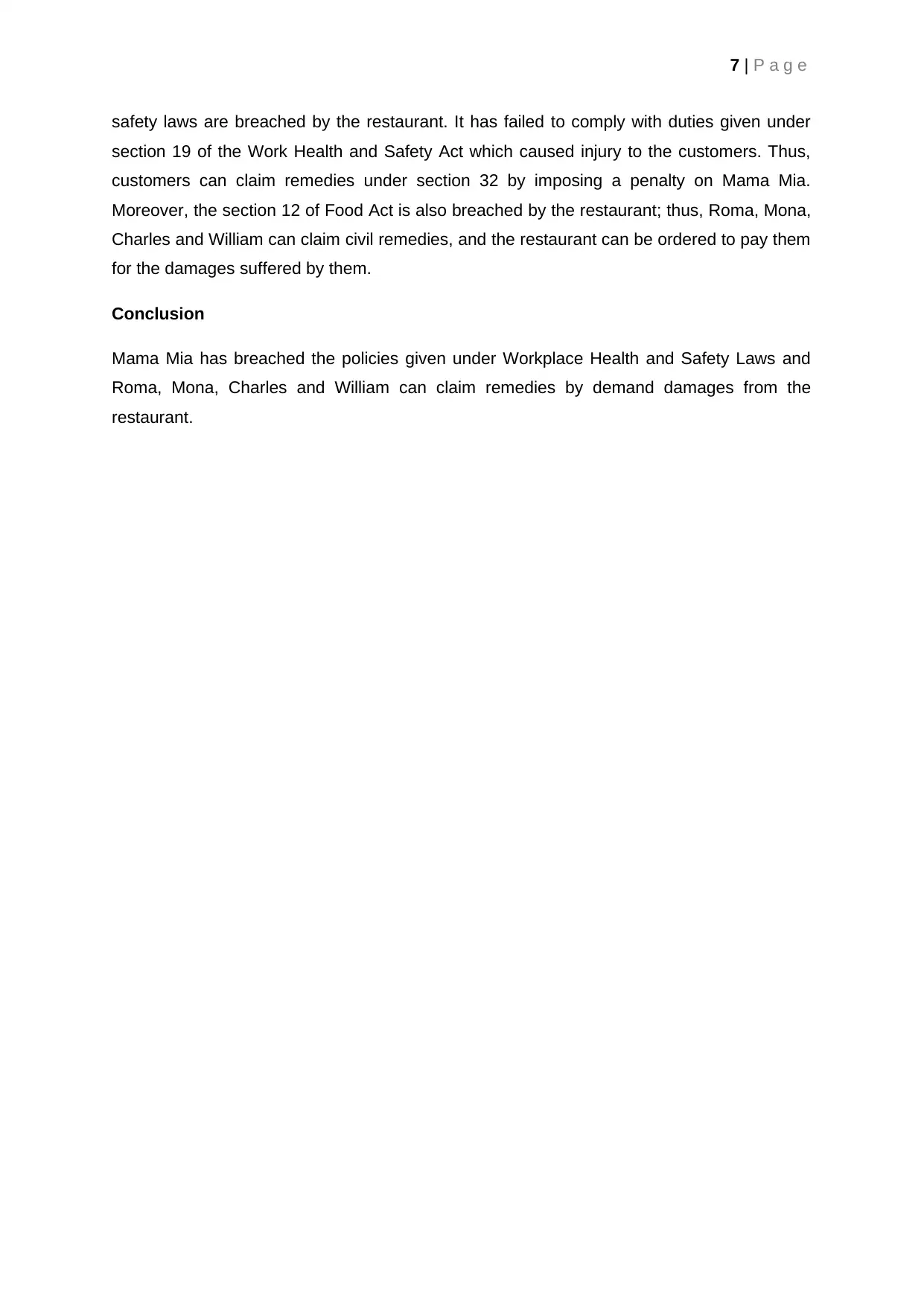
7 | P a g e
safety laws are breached by the restaurant. It has failed to comply with duties given under
section 19 of the Work Health and Safety Act which caused injury to the customers. Thus,
customers can claim remedies under section 32 by imposing a penalty on Mama Mia.
Moreover, the section 12 of Food Act is also breached by the restaurant; thus, Roma, Mona,
Charles and William can claim civil remedies, and the restaurant can be ordered to pay them
for the damages suffered by them.
Conclusion
Mama Mia has breached the policies given under Workplace Health and Safety Laws and
Roma, Mona, Charles and William can claim remedies by demand damages from the
restaurant.
safety laws are breached by the restaurant. It has failed to comply with duties given under
section 19 of the Work Health and Safety Act which caused injury to the customers. Thus,
customers can claim remedies under section 32 by imposing a penalty on Mama Mia.
Moreover, the section 12 of Food Act is also breached by the restaurant; thus, Roma, Mona,
Charles and William can claim civil remedies, and the restaurant can be ordered to pay them
for the damages suffered by them.
Conclusion
Mama Mia has breached the policies given under Workplace Health and Safety Laws and
Roma, Mona, Charles and William can claim remedies by demand damages from the
restaurant.
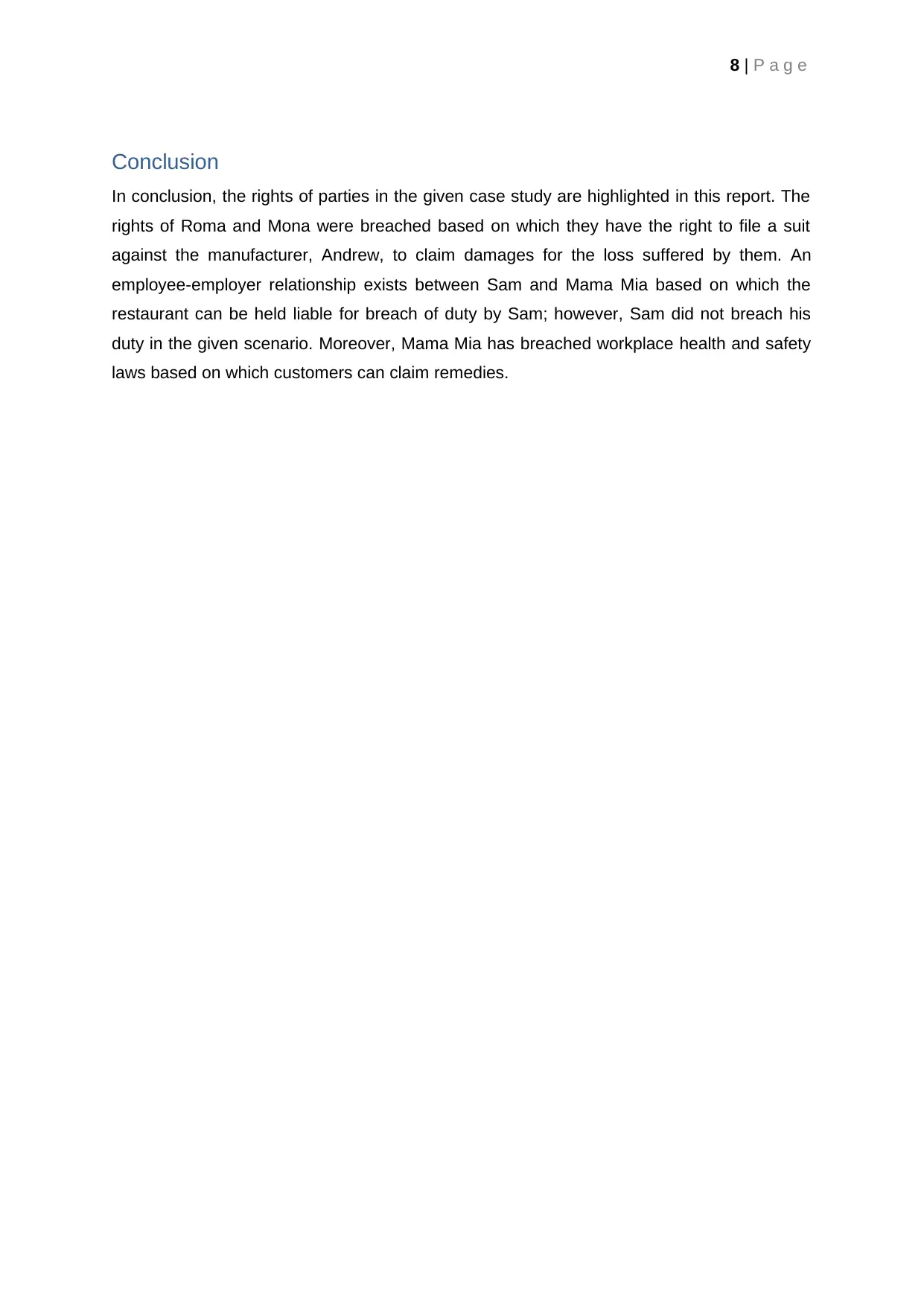
8 | P a g e
Conclusion
In conclusion, the rights of parties in the given case study are highlighted in this report. The
rights of Roma and Mona were breached based on which they have the right to file a suit
against the manufacturer, Andrew, to claim damages for the loss suffered by them. An
employee-employer relationship exists between Sam and Mama Mia based on which the
restaurant can be held liable for breach of duty by Sam; however, Sam did not breach his
duty in the given scenario. Moreover, Mama Mia has breached workplace health and safety
laws based on which customers can claim remedies.
Conclusion
In conclusion, the rights of parties in the given case study are highlighted in this report. The
rights of Roma and Mona were breached based on which they have the right to file a suit
against the manufacturer, Andrew, to claim damages for the loss suffered by them. An
employee-employer relationship exists between Sam and Mama Mia based on which the
restaurant can be held liable for breach of duty by Sam; however, Sam did not breach his
duty in the given scenario. Moreover, Mama Mia has breached workplace health and safety
laws based on which customers can claim remedies.
⊘ This is a preview!⊘
Do you want full access?
Subscribe today to unlock all pages.

Trusted by 1+ million students worldwide
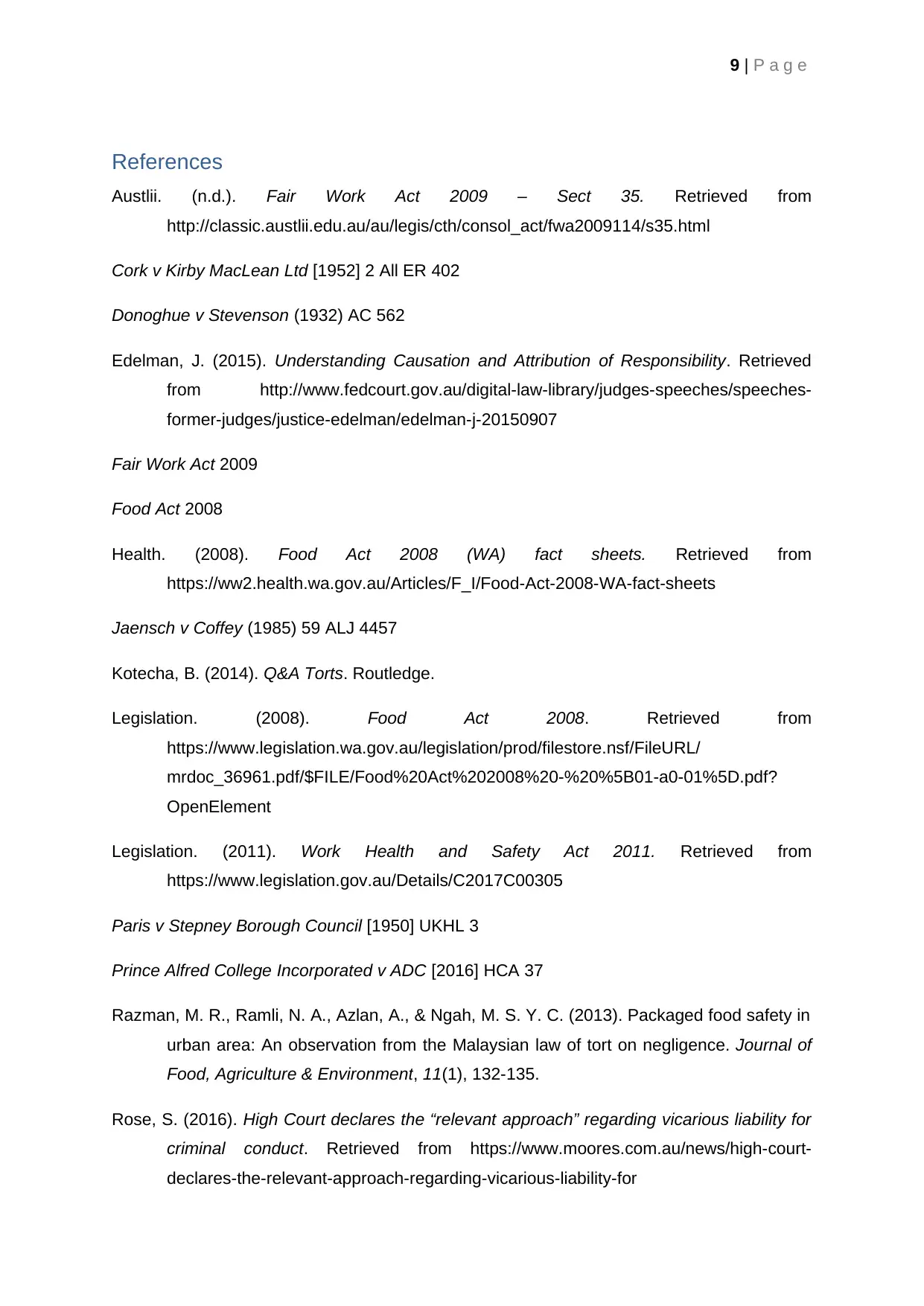
9 | P a g e
References
Austlii. (n.d.). Fair Work Act 2009 – Sect 35. Retrieved from
http://classic.austlii.edu.au/au/legis/cth/consol_act/fwa2009114/s35.html
Cork v Kirby MacLean Ltd [1952] 2 All ER 402
Donoghue v Stevenson (1932) AC 562
Edelman, J. (2015). Understanding Causation and Attribution of Responsibility. Retrieved
from http://www.fedcourt.gov.au/digital-law-library/judges-speeches/speeches-
former-judges/justice-edelman/edelman-j-20150907
Fair Work Act 2009
Food Act 2008
Health. (2008). Food Act 2008 (WA) fact sheets. Retrieved from
https://ww2.health.wa.gov.au/Articles/F_I/Food-Act-2008-WA-fact-sheets
Jaensch v Coffey (1985) 59 ALJ 4457
Kotecha, B. (2014). Q&A Torts. Routledge.
Legislation. (2008). Food Act 2008. Retrieved from
https://www.legislation.wa.gov.au/legislation/prod/filestore.nsf/FileURL/
mrdoc_36961.pdf/$FILE/Food%20Act%202008%20-%20%5B01-a0-01%5D.pdf?
OpenElement
Legislation. (2011). Work Health and Safety Act 2011. Retrieved from
https://www.legislation.gov.au/Details/C2017C00305
Paris v Stepney Borough Council [1950] UKHL 3
Prince Alfred College Incorporated v ADC [2016] HCA 37
Razman, M. R., Ramli, N. A., Azlan, A., & Ngah, M. S. Y. C. (2013). Packaged food safety in
urban area: An observation from the Malaysian law of tort on negligence. Journal of
Food, Agriculture & Environment, 11(1), 132-135.
Rose, S. (2016). High Court declares the “relevant approach” regarding vicarious liability for
criminal conduct. Retrieved from https://www.moores.com.au/news/high-court-
declares-the-relevant-approach-regarding-vicarious-liability-for
References
Austlii. (n.d.). Fair Work Act 2009 – Sect 35. Retrieved from
http://classic.austlii.edu.au/au/legis/cth/consol_act/fwa2009114/s35.html
Cork v Kirby MacLean Ltd [1952] 2 All ER 402
Donoghue v Stevenson (1932) AC 562
Edelman, J. (2015). Understanding Causation and Attribution of Responsibility. Retrieved
from http://www.fedcourt.gov.au/digital-law-library/judges-speeches/speeches-
former-judges/justice-edelman/edelman-j-20150907
Fair Work Act 2009
Food Act 2008
Health. (2008). Food Act 2008 (WA) fact sheets. Retrieved from
https://ww2.health.wa.gov.au/Articles/F_I/Food-Act-2008-WA-fact-sheets
Jaensch v Coffey (1985) 59 ALJ 4457
Kotecha, B. (2014). Q&A Torts. Routledge.
Legislation. (2008). Food Act 2008. Retrieved from
https://www.legislation.wa.gov.au/legislation/prod/filestore.nsf/FileURL/
mrdoc_36961.pdf/$FILE/Food%20Act%202008%20-%20%5B01-a0-01%5D.pdf?
OpenElement
Legislation. (2011). Work Health and Safety Act 2011. Retrieved from
https://www.legislation.gov.au/Details/C2017C00305
Paris v Stepney Borough Council [1950] UKHL 3
Prince Alfred College Incorporated v ADC [2016] HCA 37
Razman, M. R., Ramli, N. A., Azlan, A., & Ngah, M. S. Y. C. (2013). Packaged food safety in
urban area: An observation from the Malaysian law of tort on negligence. Journal of
Food, Agriculture & Environment, 11(1), 132-135.
Rose, S. (2016). High Court declares the “relevant approach” regarding vicarious liability for
criminal conduct. Retrieved from https://www.moores.com.au/news/high-court-
declares-the-relevant-approach-regarding-vicarious-liability-for
Paraphrase This Document
Need a fresh take? Get an instant paraphrase of this document with our AI Paraphraser
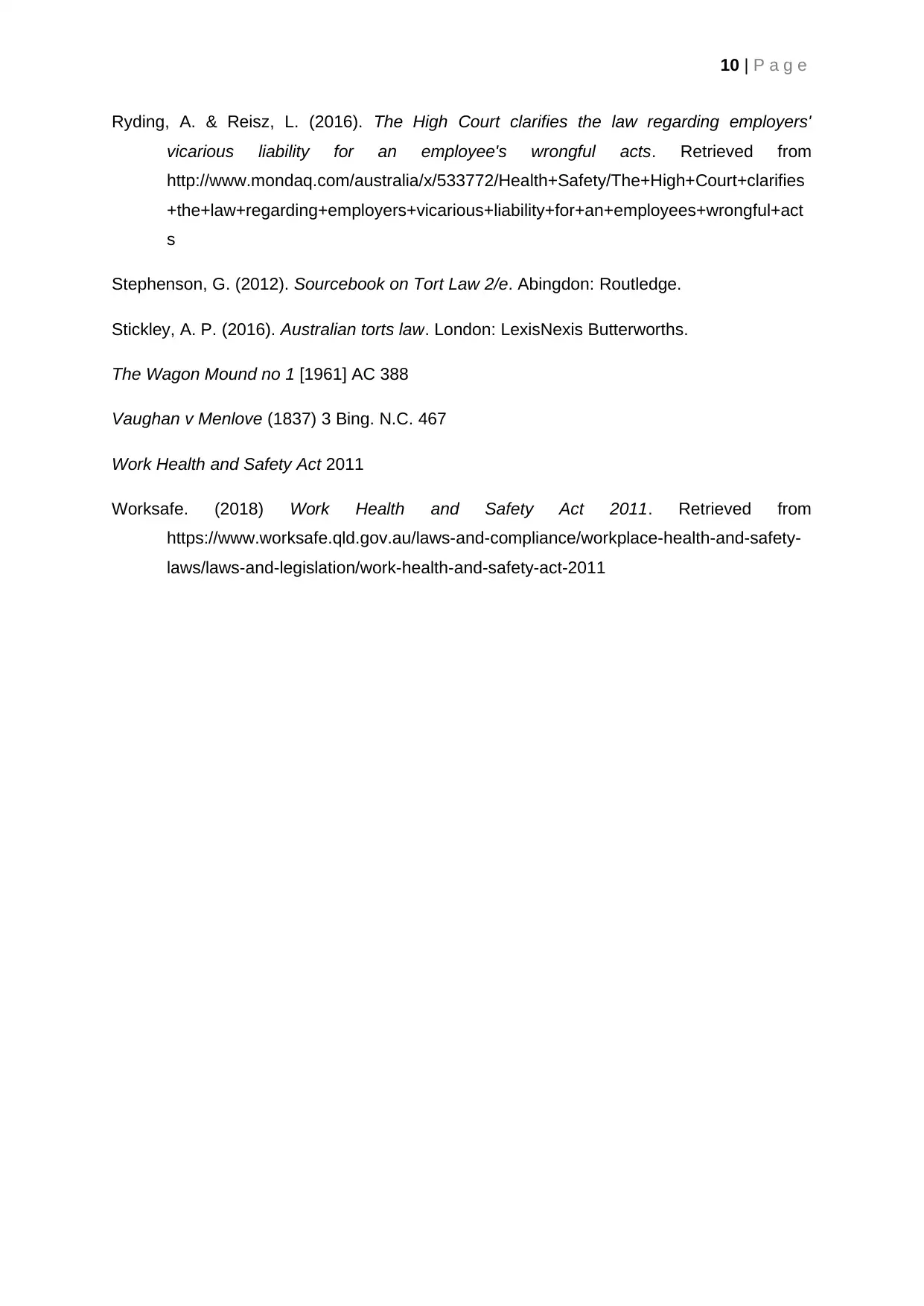
10 | P a g e
Ryding, A. & Reisz, L. (2016). The High Court clarifies the law regarding employers'
vicarious liability for an employee's wrongful acts. Retrieved from
http://www.mondaq.com/australia/x/533772/Health+Safety/The+High+Court+clarifies
+the+law+regarding+employers+vicarious+liability+for+an+employees+wrongful+act
s
Stephenson, G. (2012). Sourcebook on Tort Law 2/e. Abingdon: Routledge.
Stickley, A. P. (2016). Australian torts law. London: LexisNexis Butterworths.
The Wagon Mound no 1 [1961] AC 388
Vaughan v Menlove (1837) 3 Bing. N.C. 467
Work Health and Safety Act 2011
Worksafe. (2018) Work Health and Safety Act 2011. Retrieved from
https://www.worksafe.qld.gov.au/laws-and-compliance/workplace-health-and-safety-
laws/laws-and-legislation/work-health-and-safety-act-2011
Ryding, A. & Reisz, L. (2016). The High Court clarifies the law regarding employers'
vicarious liability for an employee's wrongful acts. Retrieved from
http://www.mondaq.com/australia/x/533772/Health+Safety/The+High+Court+clarifies
+the+law+regarding+employers+vicarious+liability+for+an+employees+wrongful+act
s
Stephenson, G. (2012). Sourcebook on Tort Law 2/e. Abingdon: Routledge.
Stickley, A. P. (2016). Australian torts law. London: LexisNexis Butterworths.
The Wagon Mound no 1 [1961] AC 388
Vaughan v Menlove (1837) 3 Bing. N.C. 467
Work Health and Safety Act 2011
Worksafe. (2018) Work Health and Safety Act 2011. Retrieved from
https://www.worksafe.qld.gov.au/laws-and-compliance/workplace-health-and-safety-
laws/laws-and-legislation/work-health-and-safety-act-2011
1 out of 11
Related Documents
Your All-in-One AI-Powered Toolkit for Academic Success.
+13062052269
info@desklib.com
Available 24*7 on WhatsApp / Email
![[object Object]](/_next/static/media/star-bottom.7253800d.svg)
Unlock your academic potential
Copyright © 2020–2025 A2Z Services. All Rights Reserved. Developed and managed by ZUCOL.





